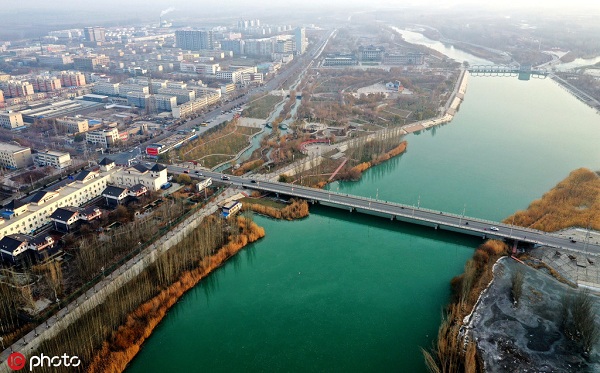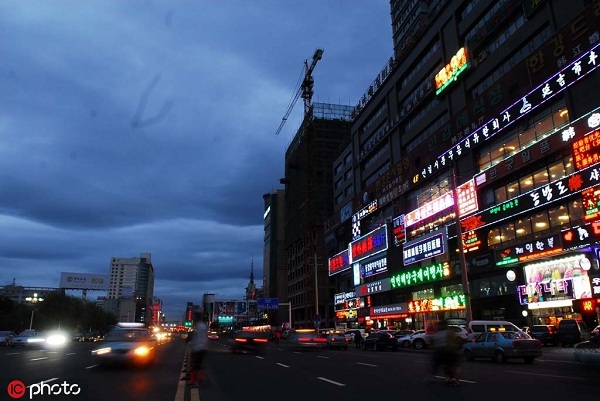Guide for doing business in Xinjiang
Natural Resources
Xinjiang has 4.063 million hectares of cultivated land, 0.2 hectares per person, which is 2.1 times that of the country. With 51.16 million hectares of pastures and grassland, Xinjiang is one of five major pastoral regions in China. The province has 6.77 million hectares of forestland.
The volume of water resources account for 3 percent of China’s total. The annual run off of surface water is 85.5 billion cubic meters, with per capita surface water reaching 4,255 cubic meters, which is 2.24 times that of the average level of the country. 25.1 billion cubic meters of exploitable water exist underground. The reserve of glaciers makes up 50 percent of China's total.

[Photo/IC]
Xinjiang boasts wide varieties of minerals with large reserves, such as oil, natural gas, coal, gold, chrome, cooper, nickel, rare metals, salts and non-metal building materials.
Of the 162 minerals found in the country, there are 122 kinds in Xinjiang. There are 60 kinds of proven reserves, including four fuel minerals, 27 metal minerals and 35 non-metallic minerals. The total amount of oil and natural gas resources in Xinjiang is 30 billion to 50 billion tons, accounting for more than a quarter of the national total, as well as gemstones, gold, muscovite, asbestos in the Altun Mountains, and Hetian jade in Kunlun Mountains.
The abundant mineral resources have bolstered Xinjiang's local industries, including metallurgical industry, chemical industry, construction industry, and plastic industry.
Xinjiang is also rich in biological resources, many of which are unique to Xinjiang. There are more than 4,000 varieties of wild animals and plants, and more than 10,000 varieties of local crops and introduced crops. In addition, Xinjiang is renowned for a wide variety of fruit trees, including ephedra, kendir, liquorice and snow lotus.

[Photo/IC]
Oil and Gas Pipelines
The construction of the West-East Gas Transmission Pipeline, more than 4,000 km long, has been completed, passing through 10 provinces, autonomous regions and municipalities. An investment of over 120 billion yuan was put into this project which was designed to transmit 12 billion cubic meters of gas a year.
Also, various pipelines, including Karamay- Dushanzi Pipeline (double line), Karamay- Urumqi (double line), Lunnan-Korla Pipeline, Shanshan-Urumqi Pipeline and Urumqi-Lanzhou Pipeline, have been completed. The first phase of Sino-Kazakhstan oil pipeline project has been put into operation. It is capable of transmitting 10 million tons of oil a year.
Telecommunication
Xinjiang boasts long-distance digital transmission network, program control telephone network, mobile phone network, meeting video telephone network, digital data network, language information network, all of which has formed modern communication networks linking Xinjiang with other parts of China.
The optical cables are 28,915 km in total length. The number of fixed telephone subscribers has reached 6.12 million, and that of mobile phone subscribers have reached 5.31 million. Its telephone penetration rate stands at 57.6 phones per 100 persons.
Internet
Tianshannet, the website of Xinjiang government, new Silk Road net and other nets and websites have been built. All websites have access to the Internet through optical cables, broadband and digital broadcasting.
The e-government is making steady headway. 15 prefectures, autonomous prefectures (cities), 13 departments of Xinjiang government and 26 counties have built their own public information websites. The number of Internet subscribers has increased to 1.06 million in recent years.
Urban Living Environment
There are 22 cities and 68 county towns in Xinjiang. Major cities include Urumqi, Karamay, Shihezi, Yining, Kashgar and Turpan, with Urumqi being the capital of Xinjiang Uygur Autonomous Region.
The urbanization rate of Xinjiang reached 37.2 percent and forest cover rate reached 2.94 percent, the urban population density was 230 persons per sq km and the gas penetration rate in cities stood at 89.3 percent.
Every year, 3.44 million tons of home refuse is collected. 18 home sewage plants were built, with daily treatment capacity reaching 1.327 million cubic meters. Air quality in Xinjiang has improved in recent years, and the number of days when urban air quality is above Grade II accounts for 73.9 percent of a year.

[Photo/IC]
The education of healthcare is undertaking steadily. There are 7,426 healthcare schools of different types and at different levels, with a student population of 4.055 million, 59.6 percent of which are members of ethnic minorities. 262,000 full-time teachers work for these schools. 1,516 hospitals have been built in Xinjiang. A complete public health regime has been built, and disease prevention and control centers are part of the regime.